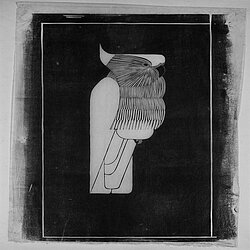Loading the page ...
Samuel Jessurun de Mesquita
1868 Amsterdam – 1944 Auschwitz
Samuel Jessurun de Mesquita, a respected and much sought-after printmaker and draughtsman in the Netherlands during the 1920s, was essentially self-taught. He came from a Portuguese-Jewish family in Amsterdam, being a typical representative of the cosmopolitan Jewish community that was so much a feature of that city. At the age of fourteen, Mesquita was rejected as a pupil by the local academy despite his artistic talents. After a brief intermezzo, during which he devoted himself to the study of architecture, he completed his training as an art teacher in 1889. In the following years Mesquita dealt intensively with various printing techniques. It was in the medium of the woodcut that he scored his first success. He also distinguished himself in the years after 1905 as an original and gifted draughtsman, etcher and lithographer. Together with former fellow-students, such as Joseph Mendes da Costa and Lambertus Zijl, Mesquita is also considered one of the most important and original representatives of the Dutch arts-and-crafts movement, although he led a modest and retiring life and was reluctant to exhibit. In 1933 Mesquita had the satisfaction of being appointed as a teacher at the Amsterdam Academy of Fine Arts, the same institution that had refused to admit him as a youth. His artistic activity was abruptly interrupted by the outbreak of the Second World War. Only a few works from this period have been preserved. In 1944 Mesquita, together with his wife and son, came to death in the extermination camp of Auschwitz.
Archive
